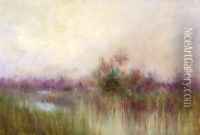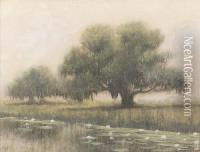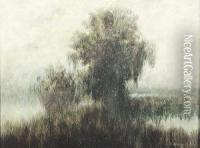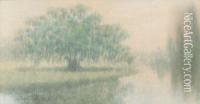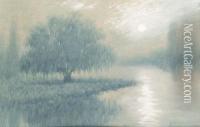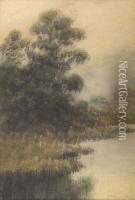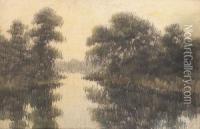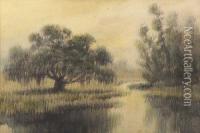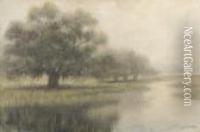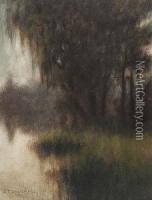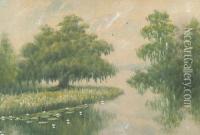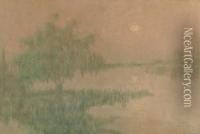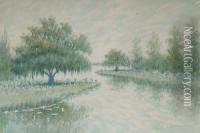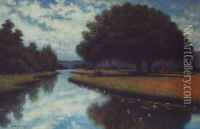Alexander John Drysdale Paintings
Alexander John Drysdale was an American artist known for his unique approach to depicting the landscapes of Louisiana. Born on February 14, 1870, in Marietta, Georgia, Drysdale moved with his family to New Orleans when he was still a child. His early exposure to the lush bayous and swamps of the region had a profound influence on his later work.
Educated locally in New Orleans, Drysdale went on to study at the Art Students League in New York and the Southern Art Union. He also took the opportunity to study under renowned artists such as Paul E. Poincy, enabling him to refine his technique and artistic vision.
Drysdale is perhaps best known for pioneering the use of oil washes on cardboard and paper, a technique that involved thinning oil paints with kerosene. This method allowed Drysdale to create ethereal, atmospheric landscapes that seemed to capture the mist and moisture of the Louisiana environment. His works often feature moss-draped cypress trees, bayous, and rural scenes that are rendered in a limited color palette, predominantly using tones of green and blue.
His paintings became popular and were highly regarded for their distinctive style and atmospheric quality. Drysdale exhibited widely during his lifetime, including shows at the Art Association of New Orleans and the Louisiana State Museum. He also received several commissions for large-scale murals.
Alexander John Drysdale continued to paint the landscapes of Louisiana until his death on March 29, 1934, in New Orleans. His artwork remains a testament to the unique beauty of the American South and is held in various collections, including the Historic New Orleans Collection and the Ogden Museum of Southern Art. Drysdale's legacy endures as one of the early 20th century's key interpreters of the Southern landscape, and his innovative techniques continue to be studied and appreciated by art enthusiasts and historians.
